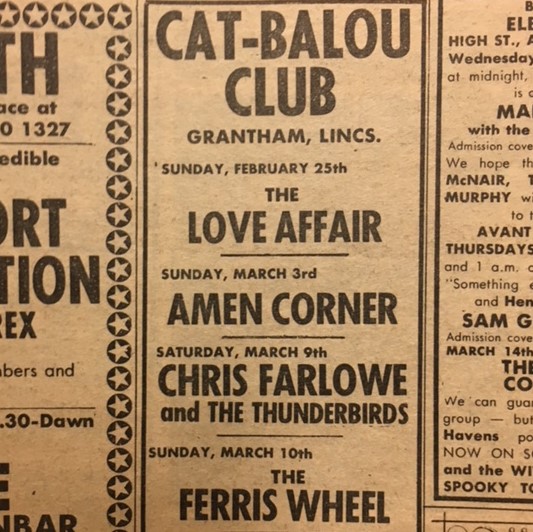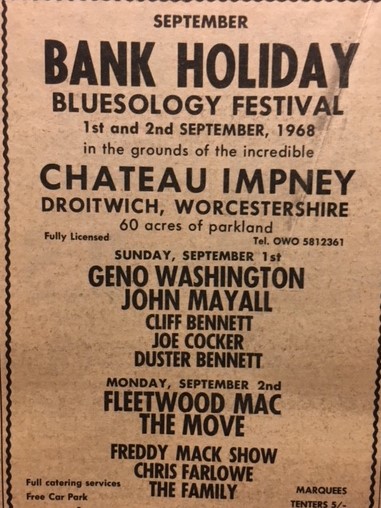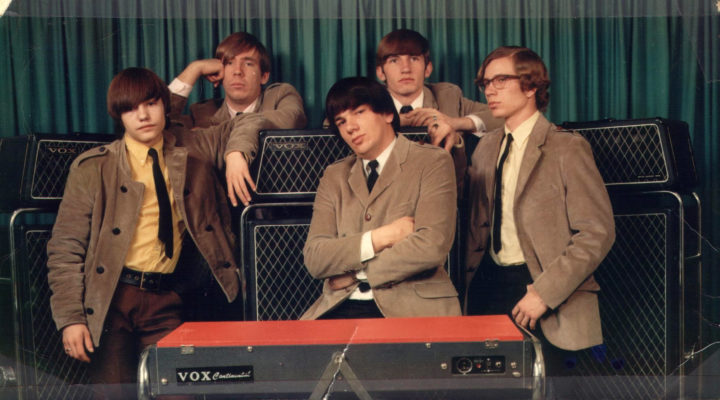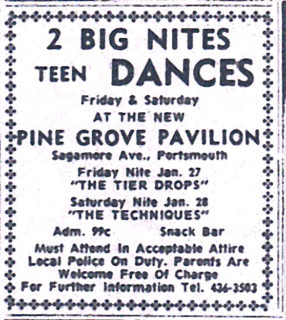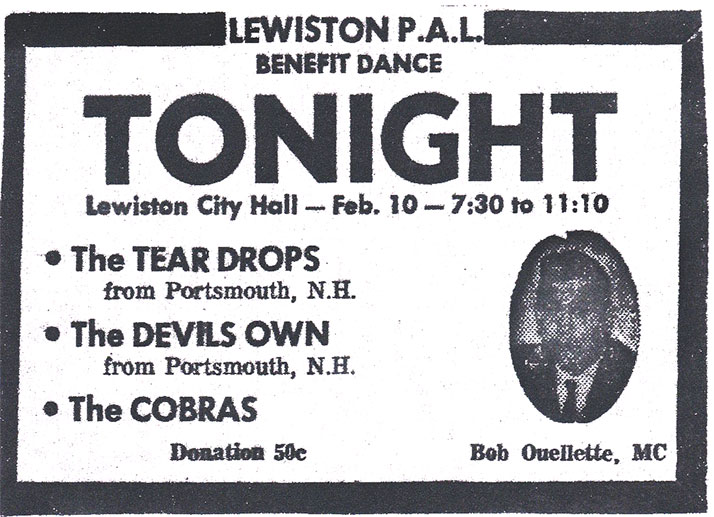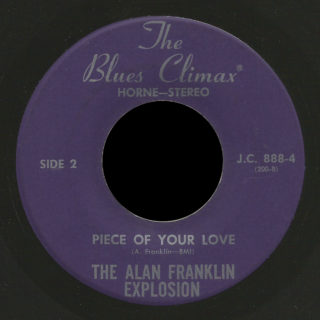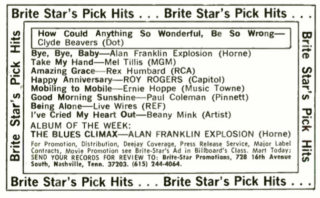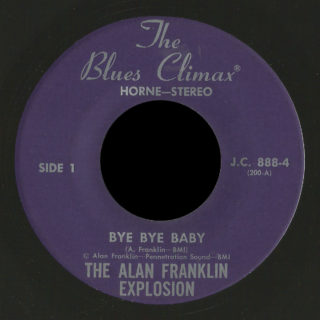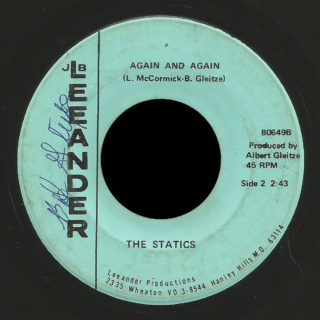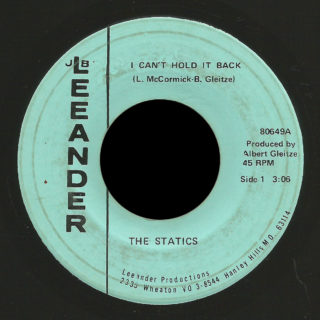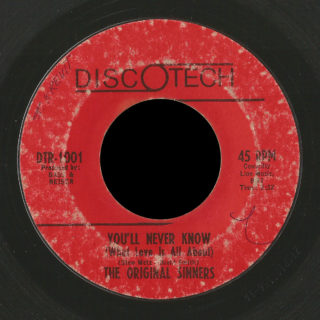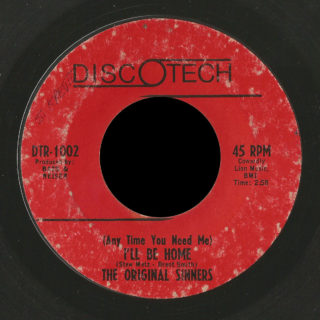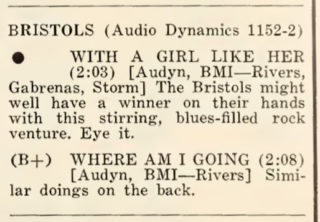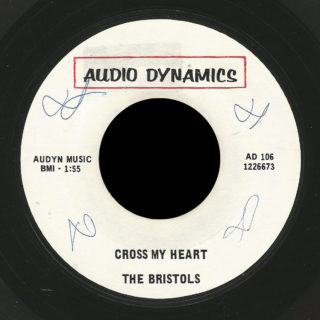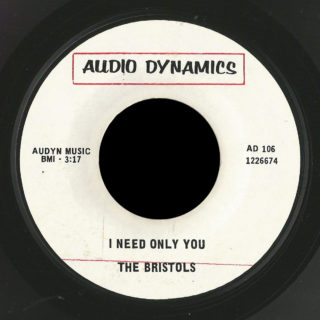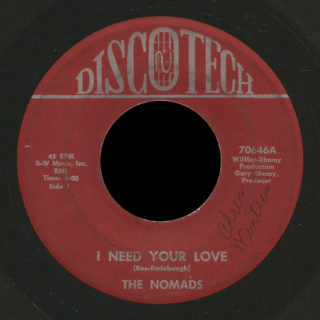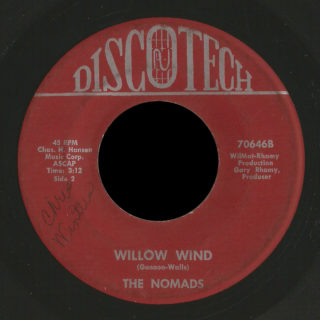Welcome to another posting of a series of gig listings for 1960s bands. None of these lists is exhaustive and my idea is to add to them in the comments section below over time. They are here for future researchers to draw on and, where possible, I have added the sources used, whether they are newspapers or websites. I have also added a few interesting bits of information and will add images in time.
I’d like to encourage band members to get in touch to share memories, or for anyone to send corrections/clarifications to my email: Warchive@aol.com
Equally important, if you attended any of the gigs below or played in the support band, please do leave your memories below in the comments section for future historians to use. If you know of any missing gigs, please add them too, if possible, with the sources.
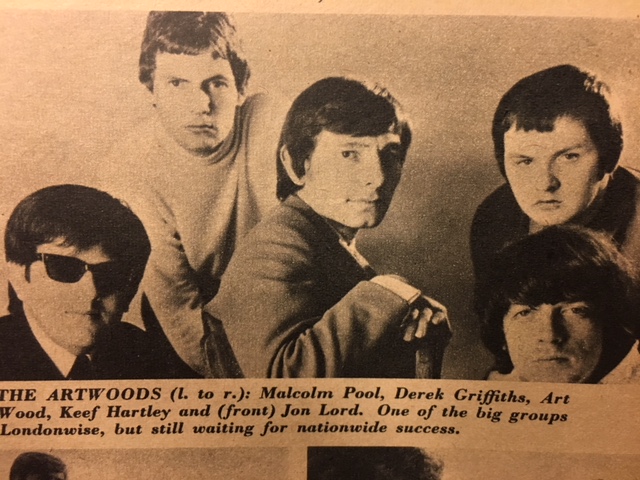
THE ARTWOODS
1963
15 April 1963 – Marquee, Oxford Street, London with Mann-Hugg Blues Brothers (Tony Bacon book: London Live)
18 May 1963 – Long’s Ballroom, Bishop’s Stortford, Herts with The Altones (Steve Ingless book: The Day Before Yesterday) Billed as Art Wood & His R&B Combo
27 July 1963 – Long’s Ballroom, Bishop’s Stortford, Herts with Mick Emery (Steve Ingless book: The Day Before Yesterday) Billed as Art Wood & His R&B Combo
30 September 1963 – White Hart, Acton, Middlesex (Melody Maker) Billed as Art Wood Combo
7 October 1963 – White Hart, Acton, Middlesex (Melody Maker) Billed as Art Wood Combo
8 December 1963 – Bristol Chinese R&B Club, Corn Exchange, Bristol (Western Scene) Billed as The Art Wood Combo
9 December 1963 – White Hart, Acton, Middlesex (Melody Maker) Billed as Art Wood Combo
1964
13 January 1964 – White Hart, Southall, Middlesex (Ruislip & Northwood Gazette) Billed as Art Wood Combo

18 May 1964 – Hermitage Ballroom, Hitchin, Hertfordshire (Hertfordshire Express) Billed as The Art Wood Combo
22 June 1964 – Klooks Kleek, West Hampstead, London (Geoff Williams’ research: Decca Studios and Klooks Kleek book)

7 July 1964 – The Downs, Hassocks, West Sussex (Evening Argus/Mid Sussex Times)

16 July 1964 – Cooks Ferry Inn, Edmonton, Middlesex (Tottenham Weekly Herald/Wood Green & Southgate Weekly Herald)
20 July 1964 – Klooks Kleek, West Hampstead, London (Geoff Williams’ research: Decca Studios and Klooks Kleek book)
4 August 1964 – Klooks Kleek, West Hampstead, London (Geoff Williams’ research: Decca Studios and Klooks Kleek book)
16 August 1964 – Eel Pie Island, Twickenham, Middlesex (website: http://eelpieislandmusic.com/eel-pie-island-roll-call)

17 August 1964 – Hermitage Ballroom, Hitchin, Herts with The King Snakes (Hertfordshire Express)
6 September 1964 – Eel Pie Island, Twickenham, Middlesex (see website above)
15 September 1964 – Klooks Kleek, West Hampstead, London (Geoff Williams’ research: Decca Studios and Klooks Kleek book)
1 October 1964 – RAE Assembly Hall, Farnborough, Hampshire with The Moquettes and Phil & The Stormsville Shakers (Aldershot News)
6 October 1964 – Aylesbury Bluesville, Borough Assembly Hall, Aylesbury, Bucks with Little Walter (Bucks Advertiser) Billed as The Art Wood Combo
14 November 1964 – Kimbells Ballroom, Southsea, Hampshire (Portsmouth News)
27 November 1964 – Chinese R&B Club, Florida Rooms, Brighton, West Sussex (Evening Argus)
1 December 1964 – Klooks Kleek, West Hampstead, London (Geoff Williams research: Decca Studios and Klooks Kleek book)
13 December 1964 – Long John Club, Maxwell Park Youth Centre, Borehamwood, Herts (Simon Gee research)
18 December 1964 – Assembly Hall, Students Union, Farnborough Technical College with The Gobbledegooks (Aldershot News)
1965
5 January 1965 – Bristol Chinese R&B Club, Corn Exchange, Bristol (Western Scene)

10 January 1965 – Eel Pie Island, Twickenham, Middlesex (website: http://eelpieislandmusic.com/eel-pie-island-roll-call)

14 January 1965 – 100 Club, Oxford Street, central London (Melody Maker)
19 January 1965 – Klooks Kleek, West Hampstead, north London (Geoff Williams research: Decca Studios and Klooks Kleek book)
21 January1965 – 100 Club, Oxford Street, central London (Melody Maker)

28 January1965 – 100 Club, Oxford Street, central London (Melody Maker)

31 January 1965 – The Downs, Hassocks, West Sussex (Evening Argus/Mid Sussex Times)
1 February 1965 – 100 Club, Oxford Street, central London (Melody Maker)
2 February 1965 – Bluesville, Aylesbury, Bucks (website: http://aylesburymusictown.co.uk/)
16 February 1965 – Southall Community Centre, Southall, Middlesex (Ron Wood’s 1965 diary)
1 March 1965 – New Victoria, Halifax, West Yorkshire with PJ Proby, The Fourmost, Sandra Barry, Four Macs, Syd & Eddie, Brian Freeman Chapters (Halifax Daily Courier and Guardian)
11 April 1965 – New Theatre, Oxford with Wayne Fontana & The Mindbenders, The Pretty Things, The Ivy League, Elkie Brooks, Syd & George, The Chapters and The Guards (Oxford Mail)
13 April 1965 – Klooks Kleek, West Hampstead, London (Geoff Williams research: Decca Studios and Klooks Kleek book)
17 April 1965 – New Georgian Club, Uxbridge, northwest London (Ruislip & Northwood Gazette)
13 June 1965 – Southall Community Centre, Southall, London (Ron Wood’s 1965 diary)
19 June 1965 – Farnborough Technical College Assembly Hall, Farnborough, Hampshire with The Muleskinners (Camberley News and Bagshot Observer/Aldershot News)
20 June 1965 – Black Prince Hotel, Bexley, London (Melody Maker)
26 June 1965 – California Ballroom, Dunstable, Bedfordshire with The Fenmen, Justin Tyme, The Sorrows and The Dyaks (website: www.california-ballroom.info/gigs/)
27 June 1965 – Nottingham Boat Club, Nottingham (Down at the Boat book)
29 June 1965 – Klooks Kleek, West Hampstead, London (Geoff Williams research: Decca Studios and Klooks Kleek book)

30 June 1965 – Pontiac, Zeeta House, Putney, London, SW15 with The Boston Dexters (NME)
11 July 1965 – Bromley Court Hotel, Bromley, London (Melody Maker)
12 July 1965 – Blue Boar, South East Essex Blues Centre, Southend (Southend Standard & Essex Weekly Advertiser)
18 August 1965 – Eel Pie Island, Twickenham, west London (website: http://eelpieislandmusic.com/eel-pie-island-roll-call)
26 August 1965 – Cooks Ferry Inn, Edmonton, north London (Leyton, Leytonstone and Waltham Forest Guardian)
4 September 1965 – Milford R&B, Strutt Arms, Milford, Derbyshire (Derby Evening Telegraph)

14 September 1965 – 100 Club, Oxford Street, central London with Davy Jones & The Lower Third (Melody Maker)
18 September 1965 – El Partido, Lewisham, southeast London with The Loose Ends (Melody Maker)
25 September 1965 – Carnival Hall, Basingstoke, Hampshire (Hants & Berks Gazette)
3 October 1965 – Eel Pie Island, Twickenham, west London (website: http://eelpieislandmusic.com/eel-pie-island-roll-call)
4 October 1965 – Klooks Kleek, West Hampstead, north London (Geoff Williams research: Decca Studios and Klooks Kleek book)
10 October 1965 – Southall Community Centre, Southall, west London with Jesse Fuller (Harrow Observer & Gazette)
12 October 1965 – 100 Club, Oxford Street, central London with The Little Darlings (Melody Maker)

16 October 1965 – 100 Club, Oxford Street, central London with The Loose Ends and Dave Anthony’s Moods (Melody Maker)

17 October 1965 – Hoochie Coochie Club, Wooden Bridge Hotel, Guildford, Surrey (Surrey Advertiser/West Surrey Advertiser)
18 October 1965 – 100 Club, Oxford Street, central London with Bo Diddley and The Duchess (Melody Maker)
27 October 1965 – Eel Pie Island, Twickenham, west London (see website above)
31 October 1965 – Nottingham Boat Club, Nottingham (Down at the Boat book)

5 November 1965 – Redcar Jazz Club, Coatham Hotel, Redcar, North Yorkshire with Chris Farlowe & The Thunderbirds, Tony Knight and The Chessmen and The Crawdaddies (Dennis Weller, Chris Scott Wilson and Graham Lowe’s book/Middlesbrough Evening Gazette)
17 November 1965 – Eel Pie Island, Twickenham, west London (website: http://eelpieislandmusic.com/eel-pie-island-roll-call)
23 November 1965 – 100 Club, Oxford Street, central London with The Pretty Things (Melody Maker)
26 November 1965 – Eel Pie Island, Twickenham, west London (see website above)
27 November 1965 – College of Technology, Bristol (Beat Instrumental)
28 November 1965 – Eel Pie Island, Twickenham, west London (Beat Instrumental)
30 November 1965 – 100 Club, Oxford Street, central London (Beat Instrumental)
3 December 1965 – California Ballroom, Dunstable, Bedfordshire with Boz & The Boz People and support (website: www.california-ballroom.info/gigs/)
5 December 1965 – Beachcomber, Nottingham (Nottingham Evening Post) Beat Instrumental has the Britannia Rowing Club
7 December 1965 – 100 Club, Oxford Street, central London (Beat Instrumental)
10 December 1965 – Refectory, Golders Green, north London (Beat Instrumental)

11 December 1965 – 100 Club, Oxford Street, London with Dave Anthony’s Moods and The Five Proud Walkers (Melody Maker)
14 December 1965 – 100 Club, Oxford Street, central London (Beat Instrumental)
16 December 1965 – Technical College, Romford, east London (Beat Instrumental)
18 December 1965 – Sperry Gyroscope, Bracknell, Berkshire (Beat Instrumental)
21 December 1965 – 100 Club, Oxford Street, central London with The Pretty Things (Melody Maker)
22 December 1965 – College of St Mark and St John, Chelsea, southwest London (Beat Instrumental)
26 December 1965 – Beachcomber, Nottingham (Nottingham Evening Post)
28 December 1965 – 100 Club, Oxford Street, central London (Melody Maker)
1966
1 January 1966 – Milford R&B, Strutt Arms, Milford, Derbyshire (Derby Evening Telegraph)
7 January 1966 – Il Rondo, Leicester (Leicester Mercury)

9 January 1966 – The New Hive Club, Wooden Bridge Hotel, Guildford, Surrey (West Surrey Advertiser)
10 January 1966 – Galaxy Club, Basingstoke, Hampshire (Hampshire & Berkshire Gazette)
16 January 1966 – Le Metro Club, Birmingham (Birmingham Evening Mail)

17 January 1966 – Carousel Club, 1 Camp Road, Farnborough, Hampshire (Aldershot News/Camberley News)

21 January 1966 – Club Continental, Eastbourne, East Sussex (Eastbourne Herald Chronicle)
24 January 1966 – Star Hotel, Croydon, south London (Chris Broom book: Rockin’ and Around Croydon)

5 March 1966 – Carousel Club, 1 Camp Road, Farnborough, Hampshire with The Sean Buckley Set (Aldershot News/Camberley News)
11 March 1966 – New Carlton Club, Warrington, Cheshire with The Pathfinders and The Seftons (Warrington Guardian)
13 March 1966 – Le Metro Club, Birmingham (Birmingham Evening Mail)
16 March 1966 – Eel Pie Island, Twickenham, west London (website: http://eelpieislandmusic.com/eel-pie-island-roll-call)

19 March 1966 – Club Continental, Eastbourne, East Sussex (Eastbourne Herald Chronicle/Melody Maker)
25 March 1966 – California Ballroom, Dunstable, Bedfordshire with The Original Dyaks and The Vivas (website: www.california-ballroom.info/gigs/)
27 March 1966 – Eel Pie Island, Twickenham, London (see website above)

2 April 1966 – Stamford R&B Club, Stamford Hotel, Stamford, Lincolnshire (Grantham Journal)
6 April 1966 – Eel Pie Island, Twickenham, London (website: http://eelpieislandmusic.com/eel-pie-island-roll-call)
11 April 1966 – Redcar Jazz Club, Coatham Hotel, Redcar, North Yorkshire with Chris Farlowe & The Thunderbirds Jimmy James & The Vagabonds and The Rockhouse Band (Dennis Weller, Chris Scott Wilson and Graham Lowe’s book)
14 April 1967 – Clouds, Derby (Derby Evening Telegraph)
1 May 1966 – Eel Pie Island, Twickenham, London (website: http://eelpieislandmusic.com/eel-pie-island-roll-call)
6 May 1966 – Eel Pie Island, Twickenham, London with Spencer’s Washboard Kings and John Mayall’s Bluesbreakers (see website above)
8 May 1966 – Nottingham Boat Club, Nottingham (Down at the Boat book)
17 May 1966 – Pilgrim, Hayward’s Heath, West Sussex with The Mike Stuart Span (Melody Maker)
21 May 1966 – Nottingham Boat Club, Nottingham (Trend & Boyfriend)
24 May 1966 – 100 Club, Oxford Street, central London (Trend & Boyfriend)
25 May 1966 – Eel Pie Island, Twickenham, west London with Deakin Lewis Band (website: http://eelpieislandmusic.com/eel-pie-island-roll-call)

27 May 1966 – Bure Club, Mudeford, Dorset (Poster from John Treais)
31 May 1966 – 100 Club, Oxford Street, central London (Beat Instrumental)
1-6 June 1966 – Gigs in Paris, France (Beat Instrumental)
4 June 1966 – Harpenden Public Hall, Harpenden, Herts with The Beat Six (Luton News) Did this happen if French gigs took place? It was advertised.
7 June 1966 – 100 Club, Oxford Street, central London (Beat Instrumental)
12 June 1966 – Eel Pie Island, Twickenham, west London with Dave Antony’s Moods (website: http://eelpieislandmusic.com/eel-pie-island-roll-call)
14 June 1966 – Cambridge University (Beat Instrumental)
17 June 1966 – Bath Pavilion, Bath (Fabulous 208) Beat Instrumental has Derby Locarno on this date
18 June 1966 – Gig in Stamford, Lincolnshire (Beat Instrumental)
19 June 1966 – Le Metro, Birmingham (Beat Instrumental)
21 June 1966 – 100 Club, Oxford Street, central London (Beat Instrumental)
23 June 1966 – Concord Club, Basset Hotel, Southampton, Hants (Beat Instrumental)
24 June 1966 – Winchester College, Winchester, Hants (Beat Instrumental)
25 June 1966 – St Gabriel’s, Camberwell, south London (Fabulous 208)
26 June 1966 – Eel Pie Island, Twickenham, west London with Tea Set (see website above)
28 June 1966 – 100 Club, Oxford Street, central London (Beat Instrumental)
1 July 1966 – Il Rondo, Leicester (Fabulous 208)
2 July 1966 – Elizabethan Club, Glasgow, Scotland (Fabulous 208)
3 July 1966 – Maryland Ballroom, Glasgow, Scotland (Fabulous 208)
4 July 1966 – Quaintways, Chester, Cheshire with Wynder K Frog, The Toplins and Wall City Jazzmen (Fabulous 208/Chester Chronicle)

9 July 1966 – Club Continental, Eastbourne, East Sussex (Eastbourne Herald Chronicle)
10 July 1966 – Co-Operative, Mansfield, Nottinghamshire (Fabulous 208)

10 July 1966 – Beachcomber Club, Nottingham (Nottingham Evening Post)
11 July 1966 – Manor House, Ipswich, Suffolk (Fabulous 208)
12 July 1966 – 100 Club, Oxford Street, London (Fabulous 208)
14 July 1966 – London College of Fashion, London (Fabulous 208)
16 July 1966 – Stamford R&B Club, Stamford Hotel, Stamford, Lincolnshire (Grantham Journal)
17 July 1966 – Eel Pie Island, Twickenham, west London with Champion Jack Dupree with The Five Proud Walkers (website: http://eelpieislandmusic.com/eel-pie-island-roll-call)
24 July 1966 – Eel Pie Island, Twickenham, west London with Deakin Lewis Band (see website above)
30 July 1966 – Winter Gardens, Banbury, Oxfordshire (Fabulous 208)
31 July 1966 – Downs Ballroom, Hassocks, West Sussex with Long Boat Men (Evening Argus)
1 August 1966 – Majestic, Reading, Berkshire (Bracknell News)
7 August 1966 – Eel Pie Island, Twickenham, west London (website: http://eelpieislandmusic.com/eel-pie-island-roll-call)
9 August 1966 – 100 Club, Oxford Street, central London (Fabulous 208)

13 August 1966 – The Beachcomber, Preston, Lancashire (Lancashire Evening Post)
14 August 1966 – Beachcomber, Bolton, Greater Manchester (Bolton Evening News)
22 August 1966 – Marquee, Wardour Street, Soho, central London with The Herd (Tony Bacon’s book: London Live)
26 August 1966 – Rialto, Derby (Beat Instrumental)

27 August 1966 – Stamford R&B Club, Stamford Hotel, Stamford, Lincolnshire (Grantham Journal)
27 August 1966 – Burlesque, Leicester (Beat Instrumental)
28 August 1966 – South Bank Jazz Club, Grimsby, Humberside with The Rumble Band (Grimsby Evening Telegraph)
30 August 1966 – 100 Club, Oxford Street, central London (Beat Instrumental)
2 September 1966 – Continental Club, Eastbourne, East Sussex (Fabulous 208)
3 September 1966 – Rhodes Centre, Bishop’s Stortford, Hertfordshire (Fabulous 208)
5 September 1966 – Woodhall Community Centre, Welwyn Garden City, Hertfordshire (website: http://www.coda-uk.co.uk/60’s_music_scene.htm)
6 September 1966 – 100 Club, Oxford Street, central London (Beat Instrumental)
9 September 1966 – California Ballroom, Dunstable, Bedfordshire with The Soul & Roll Band (website: www.california-ballroom.info/gigs/)
10 September 1966 – Dreamland, Margate, Kent with The Bo Street Runners (East Kent Times)
11 September 1966 – Eel Pie Island, Twickenham, west London (Fabulous 208)
13 September 1966 – 100 Club, Oxford Street, central London (Beat Instrumental)
14 September 1966 – Discoblue Club, Ryde, Isle of Wight (Fabulous 208)
15 September 1966 – New Yorker Discotheque, Swindon, Wiltshire with The Pack (Swindon Evening Advertiser)
17 September 1966 – Greyhound Hotel, Cromford, Derbyshire (Fabulous 208)

23 September 1966 – Benn Memorial Hall, Rugby, Warwickshire with The Justin Brothers (Rugby Advertiser)
24 September 1966 – Beachcomber, Nottingham with John Mayall’s Bluesbreakers (Nottingham Evening Post)
24 September 1966 – Mansfield Blues, Mansfield, Nottinghamshire (Nottingham Evening Post)
25 September 1966 – Metro Club, Birmingham (Fabulous 208)

30 September 1966 – Il Rondo, Leicester (Leicester Mercury)

1 October 1966 – Rhodes Centre, Bishop’s Stortford, Herts with The Characters (Steve Ingless book: The Day Before Yesterday)
3 October 1966 – Marquee, Wardour Street, Soho, London with The MI5 (Tony Bacon’s book: London Live)
4 October 1966 – Klooks Kleek, West Hampstead, London (Fabulous 208)
4 October 1966 – Blaises, Imperial Hotel, Queen’s Gate, London (Fabulous 208)
5 October 1966 – Discoblue, Ryde, Isle of Wight (Fabulous 208)
7 October 1966 – University College, London (Fabulous 208)
9 October 1966 – Britannia Rowing Club, Nottingham (Nottingham Evening Post)
9 October 1966 – Eel Pie Island, Twickenham, west London (website: http://eelpieislandmusic.com/eel-pie-island-roll-call)
21 October 1966 – Hull University, Hull (Fabulous 208)
22 October 1966 – Civic Hall, Guildford, Surrey (Fabulous 208)
23 October 1966 – Hive Club, Wooden Bridge, Guildford, Surrey (Surrey Advertiser)
26 October 1966 – Eel Pie Island, Twickenham, west London with The After Eight Blues Band (see website above)
28 October 1966 – Location, Woolwich Arsenal Station with The Scots of St James (Melody Maker)
29 October 1966 – Exeter University, Exeter, Devon with Cliff Bennett & The Rebel Rousers (Fabulous 208)
3 November 1966 – Concorde, Southampton, Hampshire (Fabulous 208)

5 November 1966 – Blue Moon, Cheltenham, Gloucestershire (Gloucestershire Echo)
6 November 1966 – King’s Arms, Wood Green, London (Fabulous 208)
7 November 1966 – Marquee, Wardour Street, Soho, London with Embers West (Tony Bacon’s book: London Live)
13 November 1966 – Eel Pie Island, Twickenham, west London with Syrian Blues Group (website: http://eelpieislandmusic.com/eel-pie-island-roll-call)
18 November 1966 – Birdcage, Eastney, Hampshire (Dave Allen research)

19 November 1966 – Royal Lido, Prestatyn, Wales with The Raynes (Chester Chronicle/Rhyl & Prestayn Gazette)

21 November 1966 – Quaintaways, Chester, Cheshire with The Roaring Sixties, Family and Wall City Jazzmen (Fabulous 208/Chester Chronicle)
23 November 1966 – Eel Pie Island, Twickenham, London with The Fantastic Footprints (see website above)
25 November 1966 – Continental Club, Eastbourne, East Sussex (Fabulous 208)
26 November 1966 – Marquee at the Shoreline, Bognor Regis, West Sussex with The Race (Melody Maker)
27 November 1966 – Union Rowing Club, Trent Bridge, Nottingham (Nottingham Evening Post)
4 December 1966 – Hive Club, Wooden Bridge, Guildford, Surrey (Surrey Advertiser)
5 December 1966 – Marquee, Wardour Street, Soho, central London with The Nite People (Tony Bacon’s book: London Live)
10 December 1966 – Clouds, Derby (Derby Evening Telegraph)
11 December 1966 – Eel Pie Island, Twickenham, west London with The Layman (website: http://eelpieislandmusic.com/eel-pie-island-roll-call)
12 December 1966 – Cymbal Club, Derby, Derbyshire (Fabulous 208)
17 December 1966 – Starlight Room, Boston Gliderdrome, Boston, Lincolnshire with The Rick ‘N’ Beckers and The Roll Movement (Lincolnshire Standard)
23 December 1966 – Bluesette Club, Bridge Street, Leatherhead, Surrey (Caterham Weekly Press)
24 December 1966 – Eel Pie Island, Twickenham, west London with A Q Blues Band (see website above)
1967
1 January 1967 – Nottingham Boat Club, Nottingham (Down at the Boat book)
4 January 1967 – Eel Pie Island, Twickenham, west London with The Footprints (website: http://eelpieislandmusic.com/eel-pie-island-roll-call)
7 January 1967 – Birdcage, Eastney, Hampshire (Dave Allen research)

7 January 1967 – Roundhouse, Chalk Farm, north London with Cliff Bennett & The Rebel Rousers, The Creation, Herbie Goins & The Night Timers and The St Louis Union (Melody Maker)
12 January 1967 – Marquee, Wardour Street, Soho, central London with The Mike Stuart Span (Melody Maker)
13 January 1967 – Eastbourne, East Sussex (Melody Maker)
14 January 1967 – Chelsea College, Chelsea, southwest London (Melody Maker/Fabulous 208)
15 January 1967 – Eel Pie Island, Twickenham, west London with The Battery (see website above)
20 January 1967 – Hartlepool, County Durham (Melody Maker)
21 January 1967 – Technical College, Sunderland, Tyne and Wear (Melody Maker/Fabulous 208)
22 January 1967 – Le Metro, Birmingham, West Midlands (Fabulous 208)
26 January-2 February 1967 – Tour of Denmark (Melody Maker)
22 February 1967 – Eel Pie Island, Twickenham, west London with Apostolic Intervention (website: http://eelpieislandmusic.com/eel-pie-island-roll-call)
25 February 1967 – Gaiety Ballroom, Ramsey, Cambridgeshire with Rhythm & Song (Cambridgeshire Times)
26 February 1967 – The Bridge, Wooden Bridge Hotel, Guildford, Surrey (Surrey Advertiser)
4 March 1967 – Southampton University, Southampton, Hampshire (Fabulous 208)
5 March 1967 – Eel Pie Island, Twickenham, west London with The Battery (see website above)
9 March 1967 – Salisbury College, Salisbury, Wiltshire (Fabulous 208)
11 March 1967 – University College, Gower Street, central London (Fabulous 208)
18 March 1967 – All Saints Hall, Whetstone, north London (Fabulous 208)
22 March 1967 – Eel Pie Island, Twickenham, west London with The Footprints (see website above)
28 March 1967 – Club A Go Go, Newcastle upon Tyne, Tyne and Wear (website; http://www.readysteadygone.co.uk/club-agogo-newcastle-2/)

1 April 1967 – Ram Jam, Brixton with Carl Douglas & The Big Stampede (Melody Maker)
2 April 1967 – Eel Pie Island, Twickenham, London (website: http://eelpieislandmusic.com/eel-pie-island-roll-call)
8 April 1967 – Britannia Rowing Club, Nottingham (Nottingham Evening Post)
9 April 1967 – South Bank Jazz Club, Grimsby, Humberside (Grimsby Evening Telegraph)

14 April 1967 – Clouds, Derby (Derby Evening Telegraph)
15 April 1967 – Wolverhampton College of Technology, Wolverhampton, West Midlands with The Soul Method (Express & Star)
16 April 1967 – The Bridge, Wooden Bridge Hotel, Guildford, Surrey with The Switch (Surrey Advertiser)
20 April 1967 – Tiles, Oxford Street, central London (Melody Maker)
21 April 1967 – Exeter University, Exeter, Devon (Fabulous 208)
23 April 1967 – Klue J Klub, Saracens Head Hotel, Chelmsford, Essex (Essex Chronicle)
26 April 1967 – Eel Pie Island, Twickenham, west London with The Syrian Blues Band (see website above)
28 April 1967 – Market Hall, St Albans, Hertfordshire (Fabulous 208)
29 April 1967 – Enfield Technical College, Enfield, London (Fabulous 208)
30 April 1967 – Le Metro, Birmingham, West Midlands (Express & Star)
5 May 1967 – Tech College, Rugby, Warwickshire (Fabulous 208)

6 May 1967 – Blue Lagoon, Newquay, Cornwall with The Reaction (West Briton & Royal Cornish Gazette)
7 May 1967 – Eel Pie Island, Twickenham, London with Chicago Line Blues Band (website: http://eelpieislandmusic.com/eel-pie-island-roll-call)
12 May 1967 – Il Rondo, Leicester (Fabulous 208)

13 May 1967 – Glastonbury Town Hall, Glastonbury with The Klick (Western Gazette)
18 May 1967 – Concorde, Southampton, Hampshire (Southern Evening Echo)

19 May 1967 – Oriel Ball, Oxford with The Mickey Finn, The Nightgales and The Burlington Sound (Cherwell)
Melody Maker reports that Colin Martin has replaced Keef Hartley around 20 May
24 May 1967 – Eel Pie Island, Twickenham, London with The Down and Outs (website: http://eelpieislandmusic.com/eel-pie-island-roll-call)
26 May 1967 – Beachcomber, Nottingham (Nottingham Evening Post)
27 May 1967 – The Pitch, Digbeth, West Midlands (Express & Star) Possibly also on 26th May
29 May 1967 – Redcar Jazz Club, Redcar, North Yorkshire with Sonny Childe & The TNT and The Real McCoy (Dennis Weller, Chris Scott Wilson and Graham Lowe’s book)
2 June 1967 – Hemel Hempstead Pavilion, Hemel Hempstead, Herts with The New Conchords (Berkhamstead Gazette, Tring & District News)
4 June 1967 – Beachcomber, Nottingham (Fabulous 208) Nottingham Evening Post has this as the Britannia Rowing Club
9 June 1967 – Cadenas, Stoke Hotel, Guildford, Surrey (Surrey Advertiser)
10 June 1967 – Architectural Association, Bedford Square, London (Fabulous 208)
25 June 1967 – The Swan, Yardley, West Midlands with The Stormsville Shakers (Birmingham Evening Mail/Coventry Evening Telegraph)
30 June 1967 – Technical College, Uxbridge, London (Fabulous 208)
1 July 1967 – South Bank Jazz Club, Grimsby, Humberside (Grimsby Evening Telegraph)

5 August 1967 – Torquay Beat & Blues Festival, Torquay Town Hall, Devon (Herald Express)
11 August 1967 – Il Rondo, Leicester (Leicester Mercury)
3 September 1967 – South Bank Jazz Club, Grimsby, Humberside (Grimsby Evening Telegraph)

8 September 1967 – Steering Wheel Club, Dorchester, Dorset with The Soundsmen and Denise Scott (Western Gazette)
16 September 1967 – Matlock Bath, Matlock, Derbyshire with Michael’s Angels (Derby Evening Telegraph)
17 September 1967 – Nottingham Boat Club, Nottingham (Down at the Boat book)
14 October 1967 – YMCA, Sebert Street, Gloucester with The Night Shift (Gloucester Citizen) Needs confirmation
22 October 1967 – Wooden Bridge, Guildford, Surrey with The Strange Brew (Surrey Advertiser)
24 October 1967 – Concorde, Southampton, Hampshire (Southern Echo)

The Hillingdon Mirror ran an article called “Salvation for the Artwoods” and photo of the band in its 24 October 1967, page 32

29 October 1967 – Le Metro, Birmingham (Birmingham Evening Mail)
30 October 1967 – 100 Club, Oxford Street, London with Ray Peterson (Melody Maker)
As St Valentine’s Day Massacre (with Art Wood):
24 December 1967 – Wooden Bridge, Guildford, Surrey with The Spirit Level (Surrey Advertiser)
26 December 1967 – Dungeon, Old Prison, Bodmin, Cornwall (West Briton & Royal Cornwall Gazette)

30 December 1967 – St James’ Spectacular, Chesterfield, Derbyshire with The Shape of The Rain (Derbyshire Times)
1968
13 January 1968 – Industrial Club, Norwich, Norfolk (Eastern Evening News)
As St Valentine’s Day Massacre (with Rod Goodway):
30 January 1968-4 February 1968 – Gigs in Paris (Rod Goodway)
8 February 1968 – Sophia Gardens, Cardiff, Wales with The Move and Bonzo Dog Doo Dah Band (Rod Goodway)
10 February 1968 – Gig in Twickenham, west London (Rod Goodway)

25 February 1968 – The South Bank, Grimsby (Grimsby Evening Telegraph)
2 March 1968 – Royal Links Pavilion, Cromer, Norfolk with The Rubber Band (North Norfolk News)
New Musical Express reports that at the end of April 1968, Derek Griffiths replaces David Meikle in Unit Four Plus 2
Thanks to Rolf Hannet in Germany for providing some of the Beat Instrumental dates.
Copyright © Nick Warburton. All Rights Reserved. No part of this article may be reproduced or transmitted in any from or by any means, without prior permission from the author.
























































































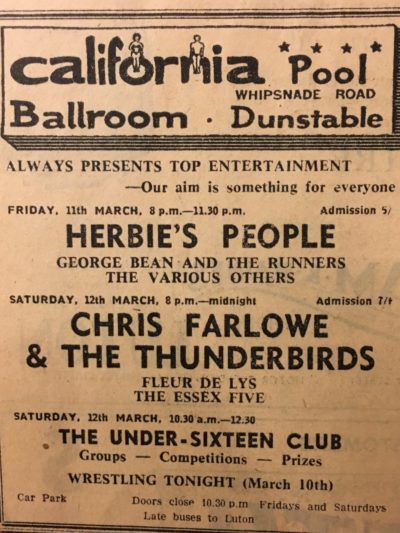












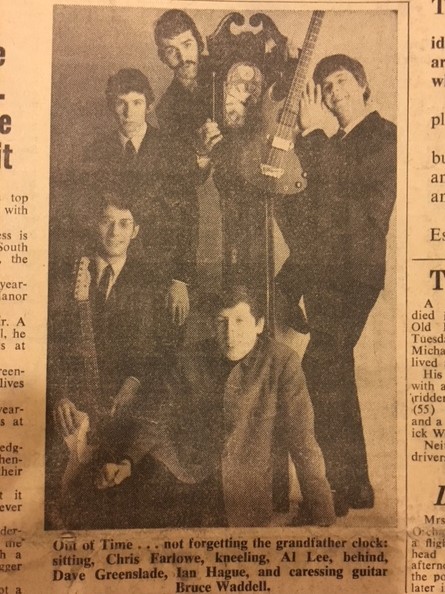












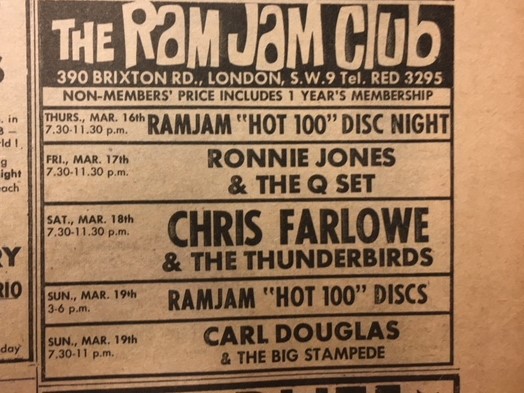 18 March 1967 – Ram Jam, Brixton, south London (Melody Maker)
18 March 1967 – Ram Jam, Brixton, south London (Melody Maker)









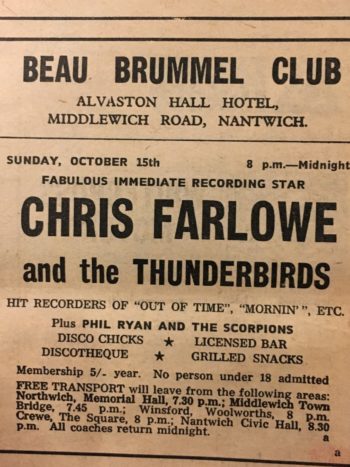 15 October 1967 – Beau Brummel Club, Alvaston Hall Hotel, Nantwich, Cheshire with Phil Ryan & The Scorpions (Crewe Chronicle)
15 October 1967 – Beau Brummel Club, Alvaston Hall Hotel, Nantwich, Cheshire with Phil Ryan & The Scorpions (Crewe Chronicle)





